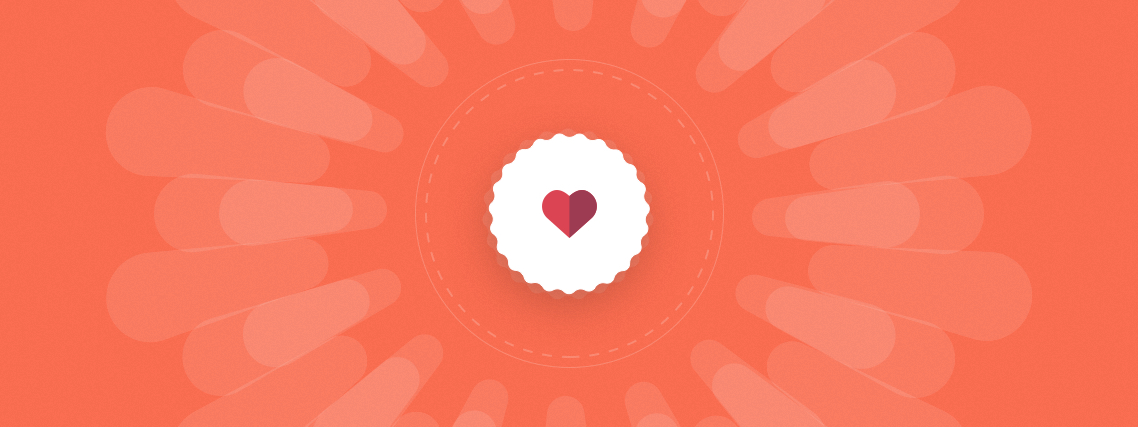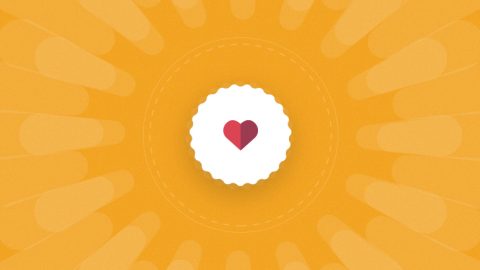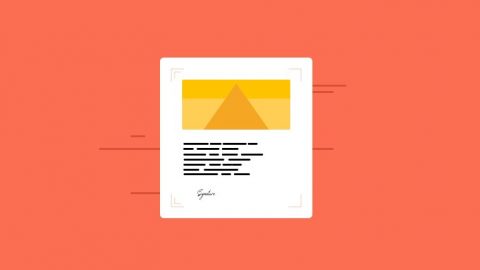But maybe you’re not a hardcore web designer who stays on top of every update of design options in the industry. These options grow in number almost daily. The online world is steadily changing, and users need interfaces that get the point across and engages them at the drop of a dime.
It wouldn’t be outlandish to say people care about the quality of the interface as much as the words on the page.
If you’re anything like us, you may be on the verge of launching your blog or website, but feel like you need a bit more information on the latest web design trends to make sure you get things right or choose a web development team wisely.
In terms of achieving the ultimate user experience and conversion rates, these are some of the top web designs we’ll be seeing in 2022 and beyond.
1. Micro-interactions

One of my personal favorite trends. This won’t exactly be new in 2017, but rest assured it may take on a whole new meaning, as more business owners getting into web development will be implementing it.
What are Micro-interactions? They are basically ‘little’ things integrated into the interface of your website that engages and entertains viewers. What I mean by ‘little things’ is animation.
For instance, when you hover the mouse over a button and it changes from blue to red. It allows you to visualize the result of your actions, which makes it a pretty neat attention grabber.
Personally, I’m a sucker for this stuff. If your website is dripping with micro-interactions, I might find myself sticking around for no other particular reason.
Needless to say, this is a very straightforward means of fully immersing your visitors. Users should always be occupied when they come to your site. A bored user is soon to be an absent one.
Sometimes, though, your site is going to need some time before completing certain actions. Micro-interactions help out by displaying a graphic in the background or playing sounds. This way users are aware of what’s happening all the time, and they don’t have to collapse into a deep sleep while waiting for a file to upload.
2. Minimalist Design AND Micro-interactions

This one is a bit self-explanatory. A minimalist web design is a clutter-free web design. When web developers manage to pull off the minimalist design, the results can be aesthetically gratifying.
If you’re going for elegance and sophistication, this may the design choice for you. Some people consider this web design to be generally ‘boring’. I’m not going to say that’s completely unfounded. But there is something to appreciate in developers who actually execute the minimalist design masterfully.
Less graphic elements come into play, meaning negative space and typography are tasked with engaging your visitors. Pulling this off requires an exceptionally trained eye.
Even better is when developers manage to mix things up by implementing both the minimalist design and micro-interactions. According to Sheila Kloefkorn of KEO marketing, going the minimalist, micro-interaction route will make a difference in conversions.

The responsiveness of your website is paramount to conversion rates. But mobile users want easy navigation and as little content as possible. Check out these eCommerce website examples for inspiration.
3. Semi-flat Web Design

You’ve probably noticed that the minimalist and semi-flat designs were made for each other. Flat designs are a bit harder to pull off. But once the developer gets it right, the results are beyond satisfactory. It accomplishes everything developers hoped they could have with the flat design not too long ago.
Initially, flat designs weren’t exactly effective in engaging users. Because the characters and images were (unsurprisingly) flat. No shading, no differentiation.
Users didn’t know the ceiling from the floor. Or rather, the homepage from the about us section. Navigation sucked.
A semi-flat design nowadays makes transitions far more unified.

It adds a touch of clarity to the website that viewers will appreciate as the cues and directions of the website are that much easier to grasp. That is, of course, when the semi-flat design is done right.
What you have here is an intuitive navigation experience that allows viewers to make their way around your website more seamlessly.
If you hear the term ‘semi-flat design’ and find yourself scratching your head wondering what I’m talking about, I’m pretty sure you’re already familiar with this design.
So long as you’ve ever used an Apple or Android device anyway.
4. Responsive Web Designs

A typical user probably wouldn’t exactly understand what this entails. But you can bet this is just what they’re looking for when they land on your website. Without it, potential customers will be hightailing it and flocking your competition.
Not too long ago when I had my own blog—this was one of my biggest challenges. I was lucky enough to have a pretty cool looking interface The content was funny and engaging (according to the few readers I had) and the overall blog had killer aesthetics.
Then one day, I had to switch over to another template for business purposes. That template had even been cooler than the first. I thought I was doing big things.
Until about a week into running the new template, I decided to visit my blog on my mobile (something I should’ve thought about way before deciding on a template—I know).
It was really bad. Terrible actually. I had gotten so caught up with the parallax scrolling, and video playback feature integrated on the front page that I totally forgot about the importance of having a responsive design.
It gets worse. The guys who were responsible for creating the template had even managed to sell customers premium versions of the software before vanishing and never responding to queries.
Long story short, the responsiveness of your website shouldn’t be placed on the backburner. Prioritize your user experience, whether responsiveness or navigation.
Basically, a responsive web design means your website looks the same on mobile as it does on a desktop or tablet. So you have all the glitz and glam, and don’t have to sacrifice any of the seamless navigation and convenience that is essential to user experience.
See some examples of responsive web designs on Awwwards. Scroll through the designs and test them out on different devices.
5. The future of Parallax Scrolling

I know the heading here is a bit dramatic. Don’t get too excited, it’s the same ole parallax scrolling you’re used to—only with a twist.
Parallax scrolling is a popular technique used in web design and computer graphics where the background images move more slowly by the camera than the foreground images.
This is also one of my favorite trends in web design, watching text and images fold onto one another as I swipe across a page simply can’t get old.
At least not by 2017, and I’m sure the rest of the Internet agrees with me.
But here’s why I included parallax scrolling on this list—switching things up a bit can help improve visitor engagement and then some.
By pairing parallax scrolling with storytelling and interactive assessments, you allow users to immerse themselves more deeply into the interface of your website intuitively.
6. Video, video, and more video

Courtesy of high-speed internet and better technology, websites are littered with high-quality videos. You won’t hear anyone complaining, though, and especially not me.
Hard to believe that not too long ago, downloading videos to your phone could be a heart-wrenching experience.
Now with access to high-speed connections, you can rely on video to get your point across to visitors as long as it’s relevant to your content.
7. Jumbo Typography

Expect to see typography making a ‘big’ change throughout 2017. This can be super useful for conversion goals. I won’t give you a fancy explanation as to why.
Simply put, big words are attention grabbers. Especially big words with a splash of flamboyance.
8. Big things come in tiny designs

On the other side of the fence, the tiny design choices will be making all the difference. This design choice is effective, in that every element placed on the interface is very intentional with the purpose of helping your visitors achieve something.
Whether it’s a teeny weeny logo or an itty-bitty call to action. Seeing as the smallest device a person can use these days might be a watch, we can expect that tiny elements won’t be losing their spot in web design anytime soon.
9. Images and illustrations make a great team

Having a hard time deciding if you should use an image or illustration to tell your story? Save yourself the trouble and use both. Even drawings of pictures might pepper your visual representation. It can be a killer way to achieve conversion goals. You just need to do your homework and make sure the mashup of illustration and images actually go together. Or things might get weird.
Conclusion

When it comes to choosing a web design for your business, you might feel like feel like prioritizing personal style over what works best for your users. I’d suggest you find some middle ground.
Try and decide on an interface that captures your own preference, while offering visitors an intuitive and engaging user experience. It’s important to be able to do what you want. But if you scare potential customers away in the process that just defeats the purpose.
[BONUS: If you are an agency or a freelance web designer, here’s a quick guide on writing web design proposals]



